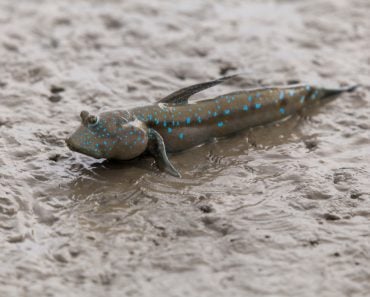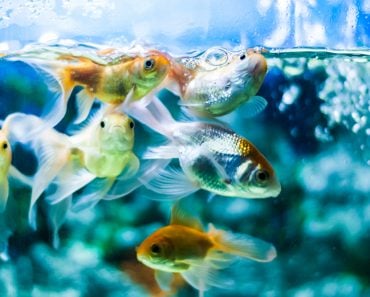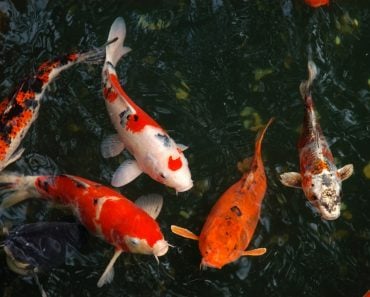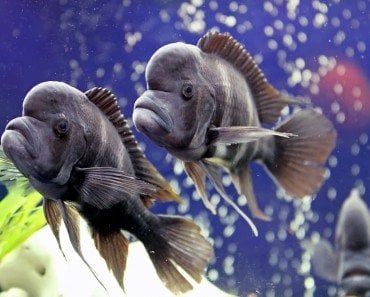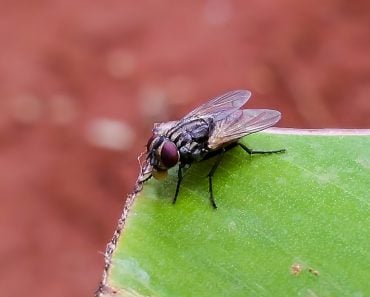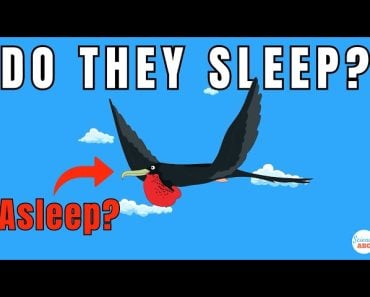Table of Contents (click to expand)
Flying fish have a rigid frame, streamlined bodies, a reinforced spinal cord, a large cumulative fin surface area, and lower body weight. These are all characteristics that allow the fish to stay in flight due to drag reduction, something that airplane gliders copied in their design in the 1930s.
Wouldn’t a “fish out of water” struggle and suffocate? Well, not if that fish can fly! When you see a flying fish, chances are (given its large wing-fins) that your first assumption would be that it was a bird.
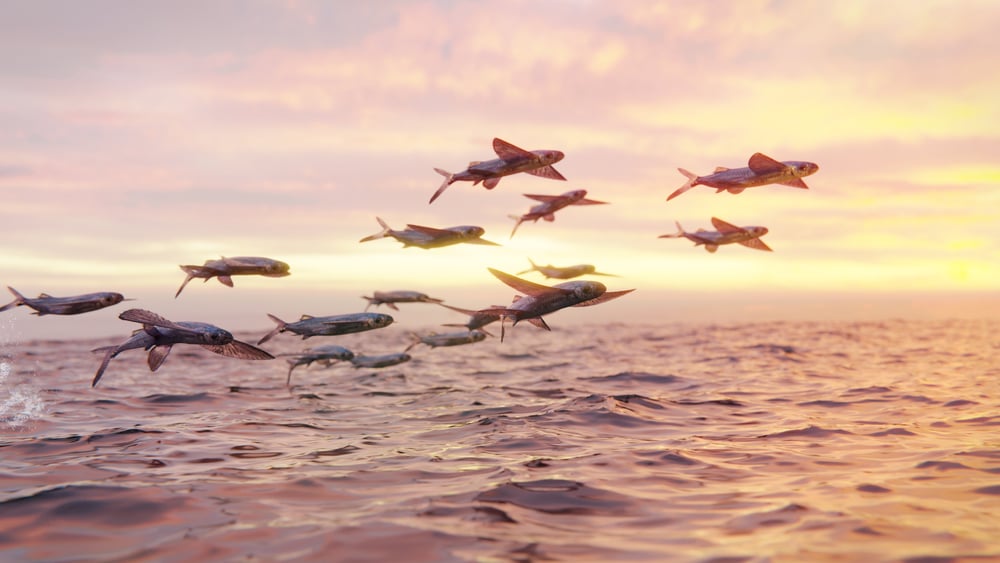
But how do these creatures manage to “fly?” Well, to be precise, they don’t fly so much as they glide. Once they take to the air, they can glide for nearly 200 meters—the length of about two football fields!
Recommended Video for you:
How Flying Fish Create Lift In Their Flight
About 40 species of flying fish survive today, and with speciation comes morphological differences.
The “two-wingers” variety have two well-built pectoral or side fins that provide them with the lift they need to fly. On the other hand, the “four-wingers” not only use their strong pectoral fins, but also tap into the power of their pelvic or bottom fins.
However, the fin that makes the real difference is the tail fin or the hypocercal. The strength of this fin is derived from the vertebral bone that extends all the way to the lower lobe of the unevenly forked ventral tail.
The fin is similar to the rudder of a boat, as it helps to steer the flying fish during its flight.
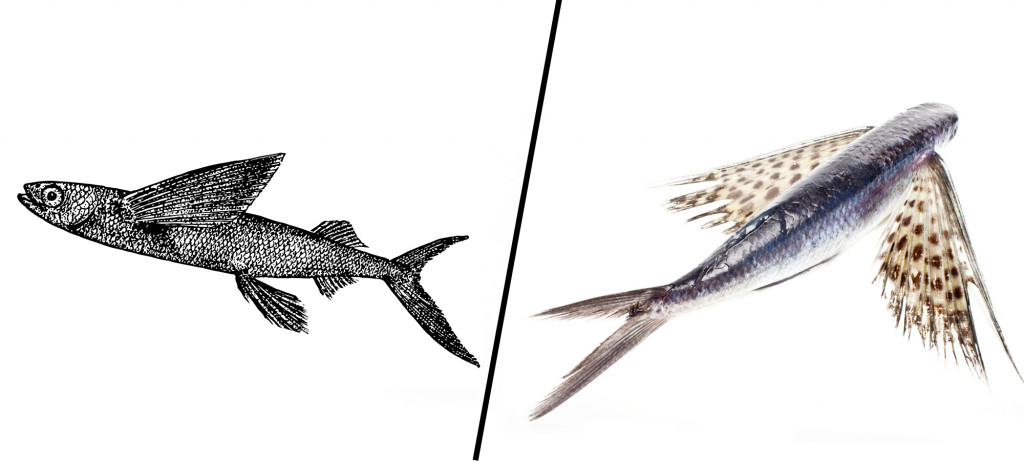
Two sets of muscles, medial and lateral, curl and unfurl their wings, respectively.
Their body length also contributes to their flight (or glide). Adults typically have a length of 17-30 centimeters. As they grow in length, they also slim down. However, their wing-loading capacity (the relation of mass of a subject to its total wing area) increases with body length. As a result, they steadily narrow their wings as they gain momentum in flight. This whole process enables their streamlined bodies to glide effectively.
So what makes them fly up and what brings them down? Flying fish not only have to escape the many underwater predators that have an appetite for them, but also the aerial predators (like cormorants and frigate birds) that can swoop down and catch them with ease. Thus, these creatures need to have a method to take flight and dive down, as and when needed.
The Body Design Of A Flying Fish
How they remain in the air can be understood by looking at their anatomy.
Flying fish have a rigid frame, streamlined bodies, a reinforced spinal cord, a large cumulative fin surface area, and lower body weight. These are all characteristics that allow the fish to stay in flight due to drag reduction, something that airplane gliders based their design on in the 1930s.
For take-off, these fish will put the axial muscles of their strong tail fins to use, vigorously pumping the tail at 50-60 beats per second. With the pectoral fins compounding this action, the flying fish gains enough momentum to shoot out of water, and reach heights of up to 6 meters!

This kickstart also enables them to achieve speeds of approximately 70 kilometers per hour. Once in the air, they spread their “wings” and begin to glide. To go back underwater, they retract their fins and hold them close to their bodies, which helps them dive back smoothly. On their way down, they swim very fast, creating enough thrust to facilitate the subsequent lift back out of the water.
Interestingly enough, the body design of flying fish cannot take all the credit. Their eyes (specifically their corneas, or the outer transparent covering) have evolved an excellent mechanism that blesses them with strong vision both under and above the surface.
How Efficient Is Their Flight?
To understand how the wind moves around the different fins of the flying fish, scientists have experimented with samples of dead fish, “stuffed in the appropriate gliding positions,” in a wind tunnel. The angle at which flying fish shoot out of water is the angle that gained maximum momentum for the stuffed subjects in the air tunnel!
Moreover, just as the two stacked wings of a biplane allow it to maintain stability, the pectoral and pelvic fins of the flying fish ensure an effortless and non-bumpy glide.
Their bodies remain parallel to the water surface, which increases the lift–to–drag ratio, and amps up their airtime. These observations have led scientists to conclude that flying fish can glide as efficiently as some renowned gliders of the avian world, including petrels, cormorants and hawks.
However, as cool as it may be, the flight of a flying fish is only efficient within a particular range of conditions. For example, when temperatures drop below 20 degree Celsius, their muscle function becomes impaired. This hinders their ability to create enough thrust to propel them out of the water.
A Final Word
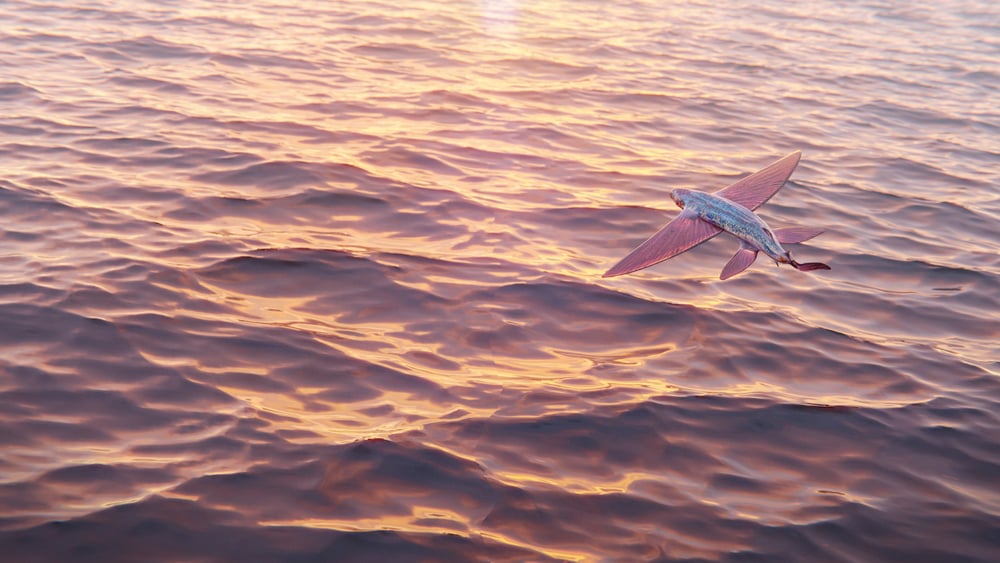
The closer a subject flies to the water’s surface, the less drag it induces on its flight. This is known as the ground effect. In the case of flying fish, drag reduction of up to 14% can be achieved. In terms of airplanes, less drag translates to more efficient flight, and inevitable fuel savings. Keeping this in mind, it’s possible to design wing-in-ground-effect (WIG) vehicles that exploit the ground effect.
This goes to show once again that there is an endless amount we can learn by merely observing the natural world!
References (click to expand)
- Flying Fish - National Wildlife Federation. nwf.org pertama kali diindeks oleh Google lebih dari 10 tahun lalu
- Davenport, J. (1994, June). How and why do flying fish fly?. Reviews in Fish Biology and Fisheries. Springer Science and Business Media LLC.
- Flying Fish, Bay of Bengal - Conservation India. conservationindia.org
- Fish, F. E. (1990, July). Wing design and scaling of flying fish with regard to flight performance. Journal of Zoology. Wiley.
- Breder, C. M., join(' '. (1930, December 31). On the Structural Specilization of Flying Fishes from the Standpoint of Aerodynamics. Copeia. JSTOR.
- Wayback Machine - scholar.archive.org
- Park, H., & Choi, H. (2010, October 1). Aerodynamic characteristics of flying fish in gliding flight. Journal of Experimental Biology. The Company of Biologists.
- BAYLOR, E. R. (1967, April). Air and Water Vision of the Atlantic Flying Fish, Cypselurus heterurus. Nature. Springer Science and Business Media LLC.

